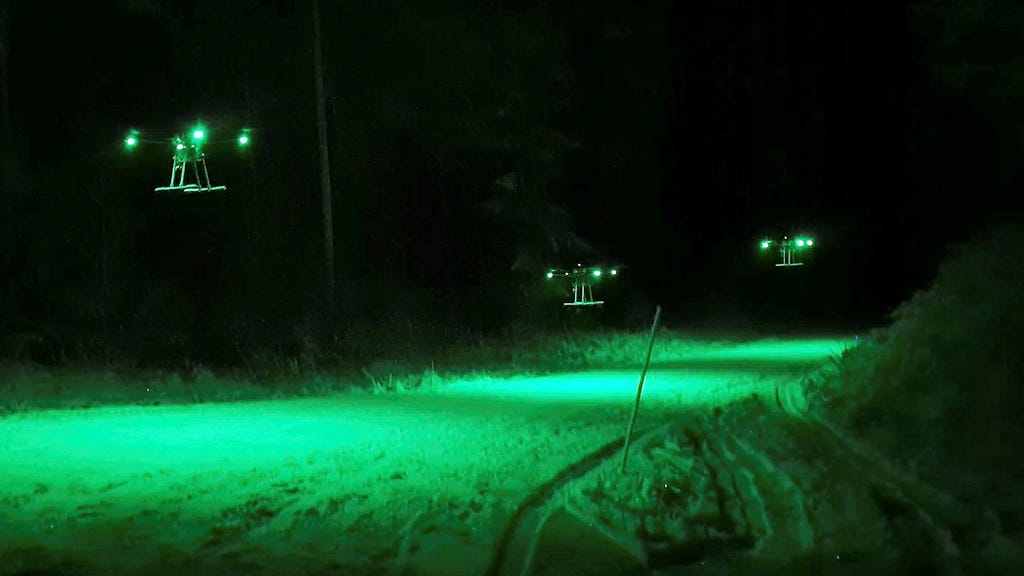The Swedish Armed Forces have unveiled a new drone swarm technology, nicknamed ”Gnadd” (a dialectal term for small, irritating insects), marking a significant leap in their technological capabilities. This innovation, developed in collaboration with Saab, allows a single soldier to control up to 100 drones simultaneously via a standard mobile phone interface, utilizing a sophisticated software program incorporating artificial intelligence. This program enables individual drones within the swarm to be assigned different tasks, such as tracking individuals, monitoring vehicles, or searching for concealed enemy combatants. The collected information is then automatically collated and presented to the operator, providing a comprehensive overview of the operational area. This represents a dramatic shift from just a year ago, when the Swedish military possessed only a few dozen drones.
The rapid development of Gnadd was spurred by the war in Ukraine, which highlighted the crucial role of unmanned aerial systems in modern warfare. Recognizing the need to accelerate their own technological advancements, the Swedish Armed Forces initiated a fast-track development program a year ago, inviting companies to contribute to the rapid innovation of military technology, particularly in the area of drone technology. This initiative reflects a broader recognition within the Swedish defense establishment of the need to embrace and adapt to the rapid pace of technological change in the military sphere, including automation, robotics, and artificial intelligence. The Gnadd system is scheduled for its first operational deployment during the upcoming Arctic Strike military exercise.
The Gnadd system represents a significant advancement in the Swedish military’s capabilities, providing enhanced situational awareness and improved intelligence gathering. The ability of a single soldier to control a large number of drones significantly multiplies the force’s surveillance capacity, allowing for broader coverage and more detailed information gathering than previously possible. This enhanced surveillance capability can be utilized for a variety of purposes, including reconnaissance, target identification, and battlefield management. Furthermore, the automated information processing and collation features of the system streamline the flow of information to the operator, enabling faster and more informed decision-making.
The Swedish government has acknowledged the rapid technological advancements in autonomous systems, with Defense Minister Pål Jonson noting that the United States anticipates up to a third of its military forces being autonomous within a decade. This highlights the global trend towards greater automation in military operations and underscores the importance of Sweden’s efforts to stay abreast of these developments. While the current iteration of Gnadd is unarmed, the Swedish military is also planning to incorporate armed drones into its arsenal, potentially including them in future drone swarms. This raises important ethical and strategic considerations surrounding the use of AI in warfare.
The introduction of AI-controlled weapon systems, while offering potential advantages in speed and efficiency, also presents significant ethical challenges. Concerns exist regarding the potential for unintended consequences and the importance of maintaining human control over lethal force. The Swedish government has emphasized the importance of human oversight in the use of autonomous weapons, with Defense Minister Jonson stating that humans must remain at the center of decision-making regarding the use of lethal force. While acknowledging the potential of AI in military applications, the Swedish government is committed to ensuring that human operators retain ultimate control over the deployment of weapons.
Army Chief Jonny Lindfors addressed the issue of decision-making timelines in the context of controlling armed drone swarms, indicating that the time required for decisions could range from seconds to days, depending on the specific target and situation. He emphasized that the same rules of engagement that apply to other weapon systems would also govern the use of armed drones. Lindfors downplayed the potential complications arising from the use of AI in this context, stating that it does not represent a fundamentally new challenge compared to existing weapon systems. This perspective highlights the Swedish military’s focus on integrating new technologies while maintaining established operational principles and ethical guidelines.














